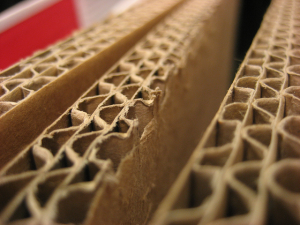Corrugated industry ‘helping to make savings’ with board weight reduction
 Corrugated companies are helping retailers to make savings in the supply chain and cut their carbon footprint by developing packaging that maximises storage and reduces transport costs.
Corrugated companies are helping retailers to make savings in the supply chain and cut their carbon footprint by developing packaging that maximises storage and reduces transport costs.
That is according to the Confederation of Paper Industries (CPI), which has released new figures showing that the average weight of corrugated boards has fallen by 12% since 2005 – from an average weight of 527gsm to 464gsm. The long-term downward trend in average board weight is set to continue alongside an increase in production of the material, as borne out by these latest figures, the CPI said.
Consumers are helping to drive the trend towards sustainable business practices as they become more aware than ever of the environmental impact of goods, CPI added. It said that the environmental impact of food waste is ten times as significant as packaging, and well-designed packaging is the best way to protect food from getting damaged or spoiled. In addition to protecting the contents, packaging can also look to reduce its own impacts and, as an example, effective steps taken by the corrugated industry have seen a steady reduction in average board weight over the last decade.
CPI director of packaging affairs Andy Barnetson said: “Corrugated box makers are helping to meet demand from consumers and retailers for attractive and sustainable packaging. The industry is doing more with less by taking effective steps to hold its own in a fiercely competitive global market.
“New technological advances have enabled papers to be made stronger, meaning that lighter weights can be used for the same roles. Combined with novel fluting grades, this makes for significant space savings in transit and storage. Corrugated will continue to evolve and adapt to the challenges ahead.”
As well as optimising packaging, measures to combat waste from within the industry include increasing reuse and recycling rates. Over 80% of corrugated packaging is recycled, and new UK boxes are made from more than 75% recycled material. Where new fibre is used, it typically comes from sustainably managed forests, CPI pointed out. This commitment to responsible forest management has made a huge contribution to the increase in the size of Europe’s forests – up 30% since 1950.

































